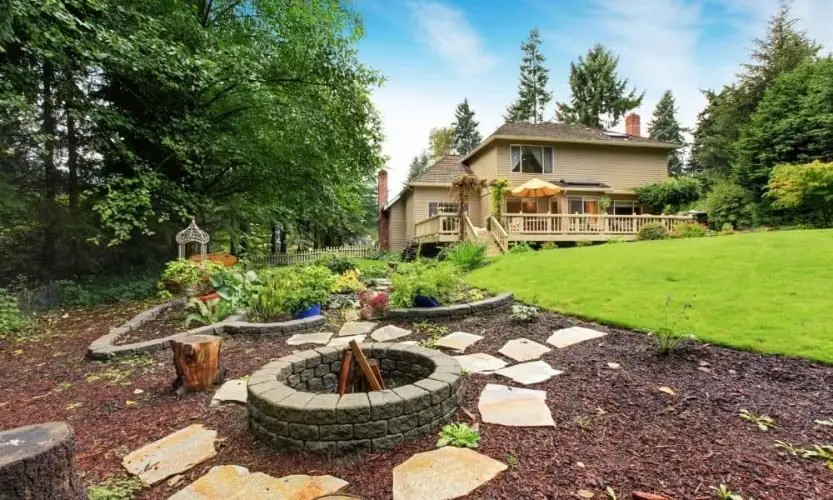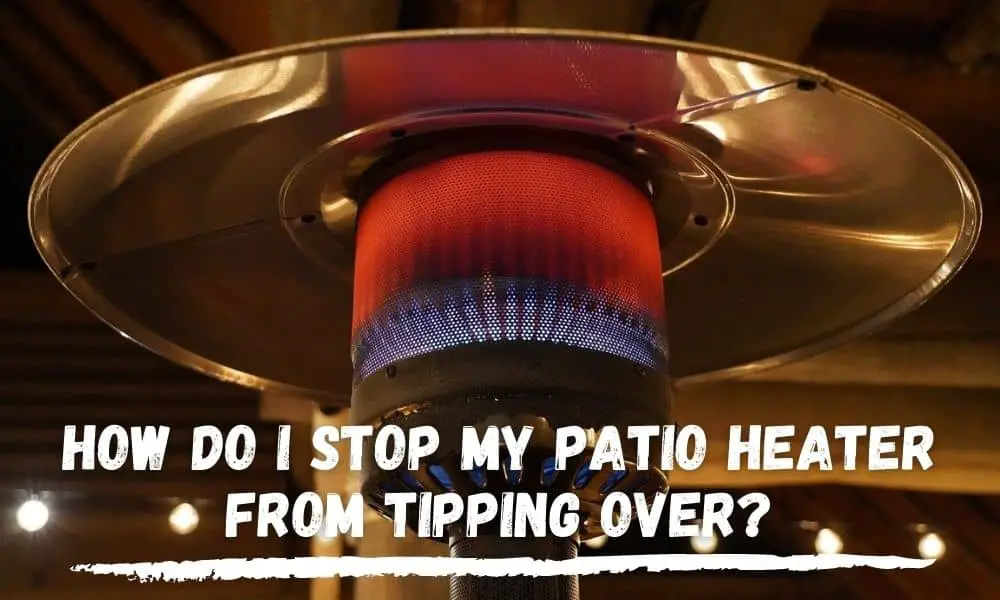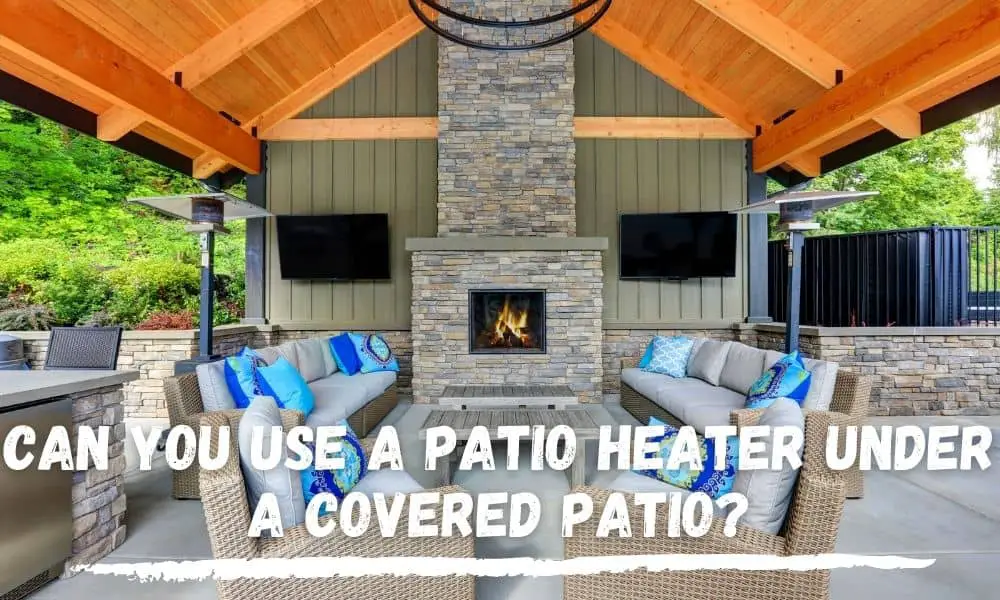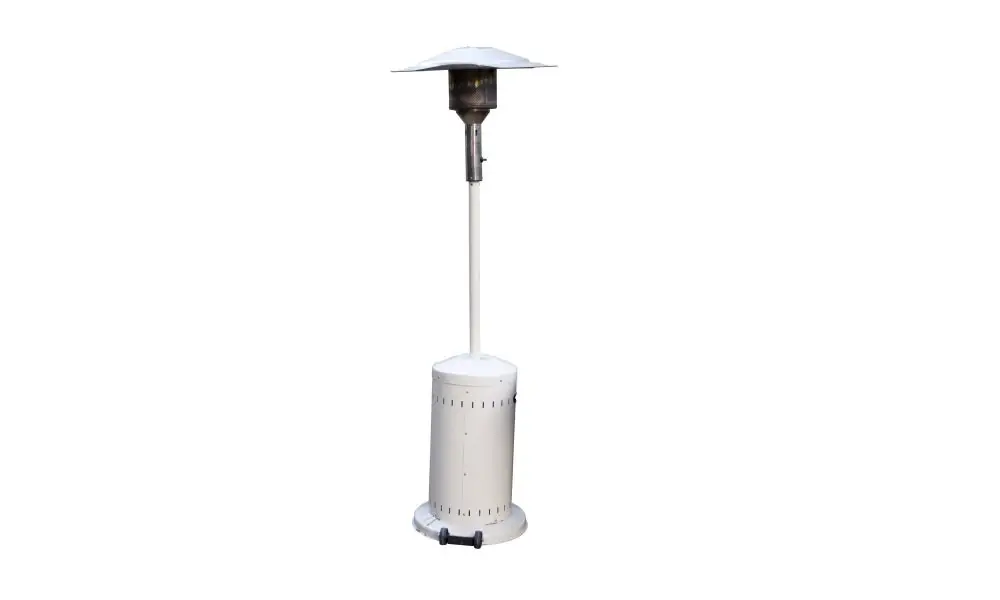There has been an increase in the concern of local authorities on out-of-control wildfires. This is in proportion to the increasing number of individuals, especially homeowners with outdoor fire pits.
Vague restrictions and open-burn laws will leave you asking a few questions. What rules apply in my area? Is a backyard fire pit worth it?

Before you invest in a fire pit, have a good grasp of what applies to outdoor fires from the local government. It may or may not allow a fire pit in a backyard patio.
Quick Navigation
- Is It Legal to Have a Fire Pit in Your Backyard?
- Recreational Fire
- Open Burning
- Is a Fire Pit a Form of Open Burning?
- What Sort of Fires Require a Permit?
- Where Should I Put a Fire Pit in My Backyard?
- FAQs
- Materials You Shouldn’t Burn in Your Wood-burning Fire Pit
- What You Can Burn in a Wood-burning Fire Pit
- Can I Use My Backyard Fire Pit While a Temporary Ban Is in Effect?
- Final Note
Is It Legal to Have a Fire Pit in Your Backyard?
The answer to the question, whether or not it is legal to have a fire pit in your backyard depends on:
- What your local government terms as a recreational fire.
- What is ‘open burning’ and its legality in your area? Find out the limitation on fire sizes and the amount of fuel you can use – also, the times of the year which are conducive for open burning.
- The types of fires you need to get a license before setting.
- Rules on the distance of the fire pit from structures
Recreational Fire
The definition of a recreational fire may slightly vary from one county to another. The fuel burnt in a recreational fire isn’t in an incinerator, barbecue grill, outdoor fireplace, or barbecue pit. Most municipalities restrict a recreational fire’s dimensions to a height of three feet and a similar diameter.
The crucial tips to remember about recreational fires are;
- The fuel you use in your fire pit (kindling, tinder, firewood), and it shouldn’t be in the garbage.
- The fire should be in an open area such as a fire pit, a campfire, and a bonfire and not in enclosures like outdoor fireplaces.
- The dimensions of the fuel area are specific to a particular municipality.
- The reason for starting the fire should be non-work-related, i.e., a party.
Open Burning
Open burning is where air contaminants get emitted directly to the atmosphere, especially from an outdoor fire. These contaminants don’t go through channels like stock or chimneys. Several municipalities, including New York City, prohibit open burning.
In localities that allow open burning, there may be restrictions tied to the practice. Find out what you can and cannot burn in an open fire from your local authority.
In simple terms, a fire outside an enclosure, such as a stock, is open burning. Some municipalities will issue a permit before you can conduct any open burning.
Is a Fire Pit a Form of Open Burning?
Typically, a fire pit will fall under open burning. However, the definition of open burning in several municipalities may exclude fire pits. This is because, even though contaminants get emitted directly, most of them are off the ground. Consequently, fire emitted from a fire pit is unlikely to contact flammable materials like a wood deck and spread to form a more massive fire.
Thus, you should be aware of your local authority’s definition of open burning.
What Sort of Fires Require a Permit?
Fires that fall under open burning, such as fire pits and small campfires, may not need a permit. Burning permits are mainly for non-recreational fires, such as industrial fires and waste disposal. To make sure you are on the right side, confirm with your local fire department.
Where Should I Put a Fire Pit in My Backyard?
Basic Rules
Rules concerning a backyard fire pit site and use may vary slightly. Here’s how to locate fire pits in a nutshell.
- Your patio ideas should still ensure you locate your fire pit a safe distance from any flammable items.
- Keep your fire pit away from structures like buildings, vehicles, and decks. The distance should be around twenty feet, but this varies depending on your location. You can confirm the distance stipulations with your authorities. However, if you have a large home, why not build your DIY fire pit far enough but a place where you can access it with ease?
- If your backyard has many trees, ensure that you place your fire pit area while taking into account the tree branches. Also, watch out for electricity lines irrespective of the landscaping ideas you may have.
- Local authorities are extra keen on if patio fire pits will interfere with your neighbors. Therefore, put your fire pit about ten feet off your property lines.
- The size of the fire pit needs consideration. You may have plenty of lawn space, but that does not mean you can choose any size of a fire pit, even during DIY projects. Local authorities may dictate the ideal size. Your home should have enough space to accommodate your fire pit design, including the gathering place or seating area around it.
Other Things
Others things to keep in mind when dealing with a fire pit in your outdoor living area include:
- Local authorities may dictate the type of building materials to use. Therefore, before trying DIY projects, know which design options coincide with the rules. Should you build a stone fire pit, a concrete fire pit, or have a metal fire pit? Should your pit design be round or square, or can you use any design options? The firepit kit and its design will also impact on the durability of the unit.
- Take the weather into account. During windstorms, flames may get out of control and affect your lawn and the adjacent neighborhood. If the wind is moving at 15 miles/hour, it is best to stay indoors and not use your backyard fire pit. You may have your firepit in the direction of the home least affected by winds. You can even use your house as a windbreaker so that constant winds won’t interrupt your party with family and friends.
- Your fire should range within three feet wide and three feet tall. Fires more enormous than that are challenging to tame, especially during a sudden gust of wind.
- Make sure that an adult is tending to the fire at all times. Never leave your kids and pets playing around a burning fire pit without adult supervision.
- For those with fire pit tables, do not sit on top of the fire pit. Invest in some patio furniture. A fire pit table may get very hot, especially if it doesn’t have a steel fire pit insert or ring. Steel fire pit inserts and rings are usually in round shapes; hence the pit designs you will choose should factor that in.
Portable propane fire pits may not have a big issue as you can easily change their positions. Ensure your natural gas fire pit ideas are strategic in your outdoor space. Be extra cautious with these rules, especially for a DIY fire pit, as your efforts may go to waste.
FAQs
What Things Can I and Can’t I Burn in My Wood Burning Fire Pit?
Smoke, poisonous gases, and chemicals are offensive and dangerous. Given the health hazard burning of incorrect substances can cause, there are many restrictive laws.
What Is the Best Firepit for My Patio?
When starting a DIY pit project on your patio, you need to balance your favorite ideas for the project with other factors. The price of the tools and other things you’ll need will determine if you can complete your ideas as per the project target.
Can your firepit size accommodate family and friends around and offer adequate warmth? Is the firepit color you want in harmony with your patio and the home décor? Can your firepit fit within your home space and still meet the required distances from your house’s walls and the property line.
Any type of fire pit is alright provided; it is durable and can serve your family comfortably.
Materials You Shouldn’t Burn in Your Wood-burning Fire Pit
Paper
You may want to rid yourself of sensitive information. However, the burning of paper is dangerous and illegal in some areas. It leads to excessive smoke. Also, the inks on the paper contain chemicals that release toxic gases when burnt.
Cardboard
It leads to excessive smoke, sometimes even more than paper. Plus, it causes fires to flare up, which may cause a fire breakout.
Particleboard
You will mostly find this from cheap furniture. It contains adhesives that bind it together. Upon burning, these adhesives emit toxic gases.
Wooden Pallets
Wooden pallets get treated using methyl bromide. This chemical turns to gas upon burning and is lethal.
Plastic
These contain hydrocarbons, which are one of the significant ozone depletes. The resultant gases upon burning are also toxic to inhale.
Poison Plant
Poison sumac, poison ivy, and poison oak contain an irritant oil. Upon burning, it converts into fumes. These irritate the lungs severely and may lead to allergic responses in a few individuals.
Trash
Burning trash in your fire pit is illegal as it releases a lot of smoke and toxic gases.
Pressure
Treated and painted wood- release toxic fumes upon burning. Several paints are lead-based, which can result in cancers if you inhale the smoke.
Unseasoned Wood and Leafy Branches
Although this may not be illegal in most places, it results in a lot of smoke. This will fill up your yard quickly and flow over to your neighbors. If your neighbors report the nuisance, you may face law consequences.
What You Can Burn in a Wood-burning Fire Pit
Anything that has or releases no chemicals is suitable for your fire pit. Go for wood that produces as little smoke as possible unless you want to smoke meat. Localities that allow fire pits in backyards dictate that you use well-seasoned wood, which may include:
Oak
It produces a lot of heat and burns at a steady and slow rate hence efficient. It is readily available; thus, bonfire enthusiasts and campers can find it with ease.
Hickory
It has a higher BTU rating than oak maple. It dries faster and more efficiently hence burns better. It is ideal for roasting marshmallows and cooking as it produces a pleasant taste.
Ash
It seasons well and burns quickly hence perfect for a campfire or bonfire.
Cedar
Although it has small flames, it produces a lot of heat ideal for a winter night. It also smells excellent upon burning.
Can I Use My Backyard Fire Pit While a Temporary Ban Is in Effect?
Restrictions involving any form of burning during a temporary ban vary from area to area. In several localities, you can have your fire pit during this ban. Others have more stringent measures hence won’t allow it.
Several places will even deter the use of indoor fireplaces during a ban unless that is your only heat source. Make sure you know how often your local authorities impose burn bans. Also, find out what is the norm during such a ban.
Final Note
Each locality features its own fire safety rules. Although the majority of the details may resemble, a few clauses may be entirely different.
This is a general article concerning backyard fire pits and the tips and tricks to use. While some areas permit backyard fire pits, others will not. So, find out the regulations that are unique to your location from your local authority.
Don’t forget to contact us via our email address on any topic related to fire pits. Our customer service is here to ensure that you have everything you need.





